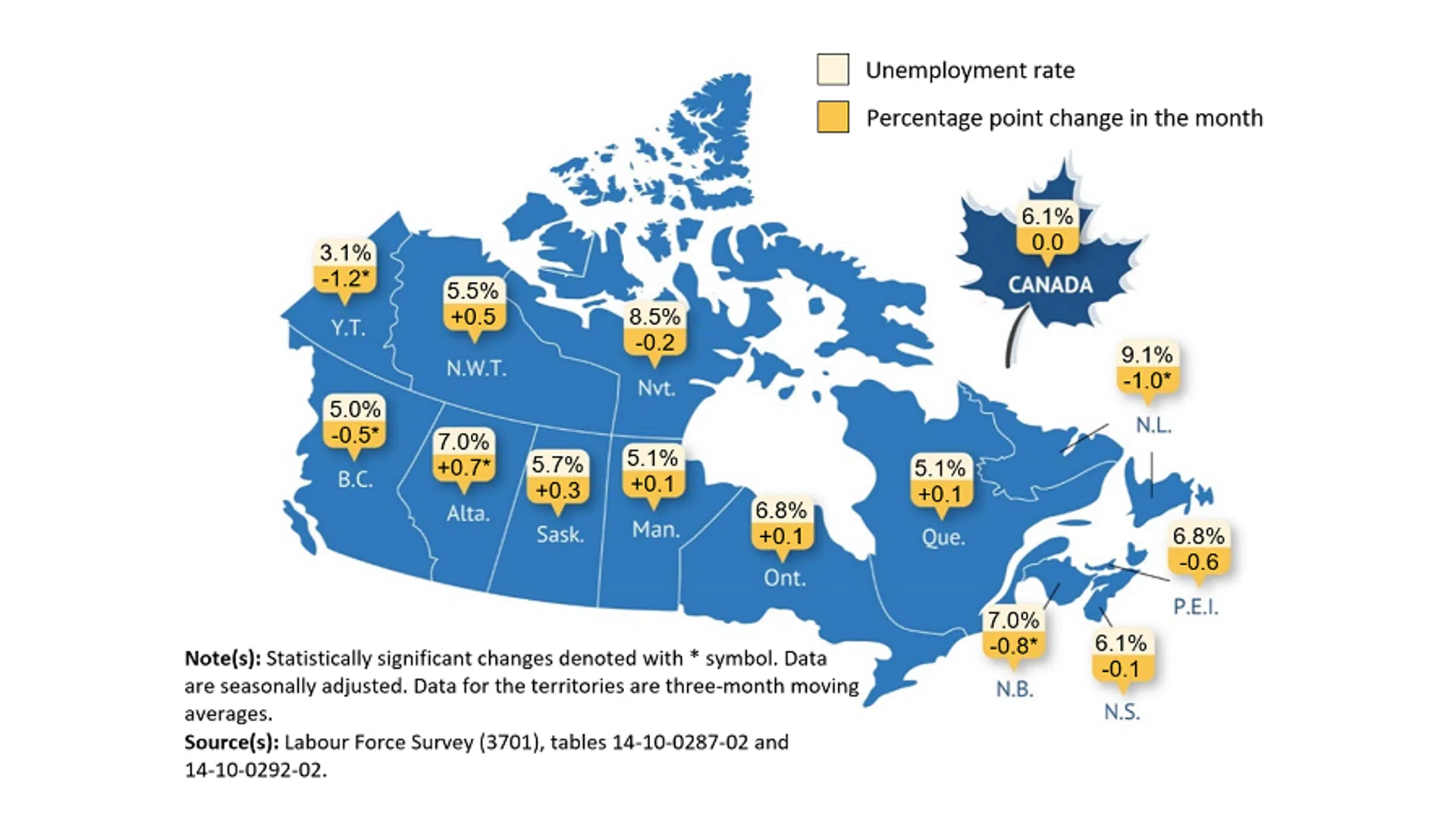Canada’s unemployment rate remained unchanged at 6.1 per cent in April.
Statistics Canada said employment increased by 90,000 across the country.
According to its monthly labour force survey, those gains were driven by part-time employment.
Ontario, British Columbia, Quebec, and New Brunswick saw employment gains in April. It was little changed in the other provinces.
StatCan said employment rose among people aged 25 to 54 as well as for males aged 15 to 24.
There were fewer women aged 55 and older employed, while employment was little changed among men aged 55 and older and female youth.
Private sector employment rose in April following four consecutive months of little change. There were also more people employed in the public sector, but self-employment was little changed.
The number of people employed in professional, scientific and technical services increased by 26,000 in April, following a decrease in March.
There were also more people working in accommodation and food services, largely offsetting a decrease in March.
Employment in health care and social assistance increased by 17,000, building on an increase of 40,000 in March.
At look at some of the provincial numbers
New Brunswick gained 4,900 full-time and 2,900 part-time positions for an overall increase of 7,800.
StatCan said that caused the unemployment rate to drop 0.8 percentage points to 7.0 per cent.
Nova Scotia gained 3,000 full-time jobs but lost 3,900 part-time positions for a net decrease of 900.
The province’s unemployment rate fell to 6.1 per cent, down from 6.2 per cent in March.
Prince Edward Island gained 700 jobs as the unemployment rate dropped to 6.8 per cent from 7.4 per cent the previous month.
In Ontario, the province added 40,200 full-time jobs but lost 15,200 part-time positions for a net increase of 25,000.
But the unemployment rate inched up 0.1 percentage point to 6.8 per cent as more people were searching for work.
The full report can be found on Statistics Canada’s website.

